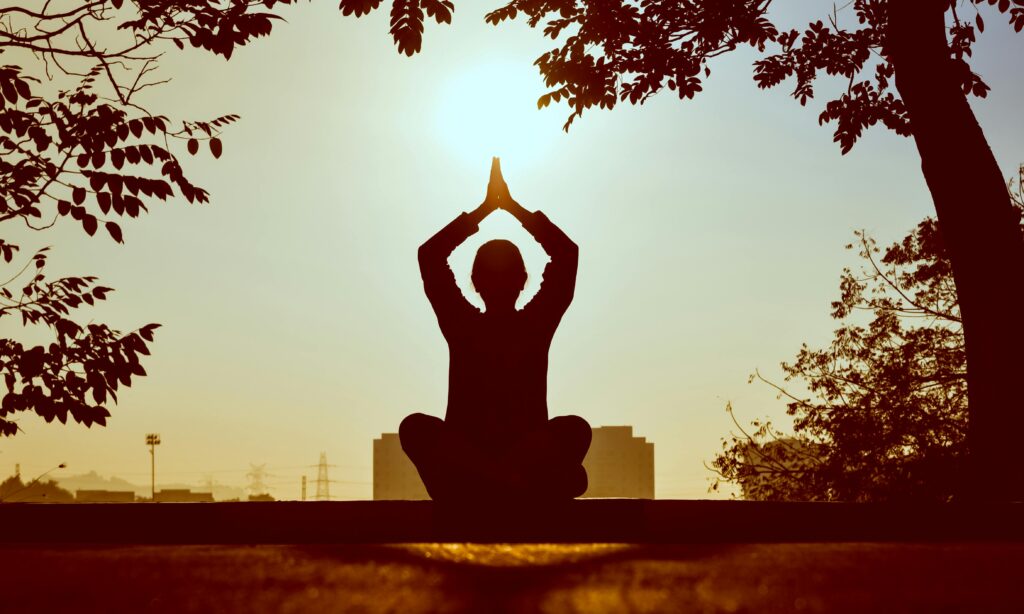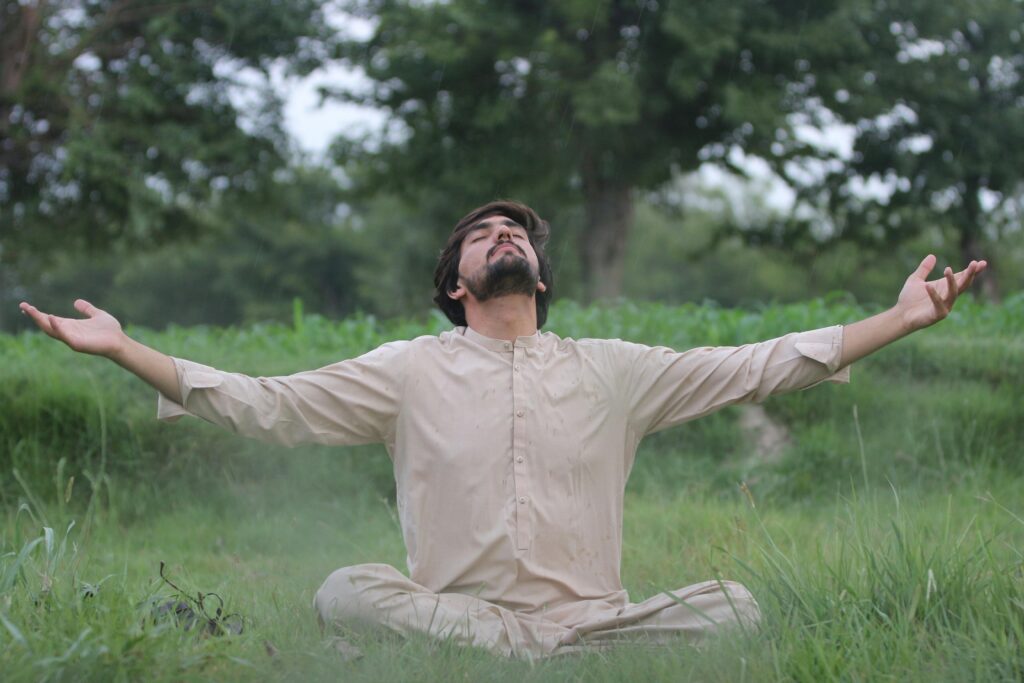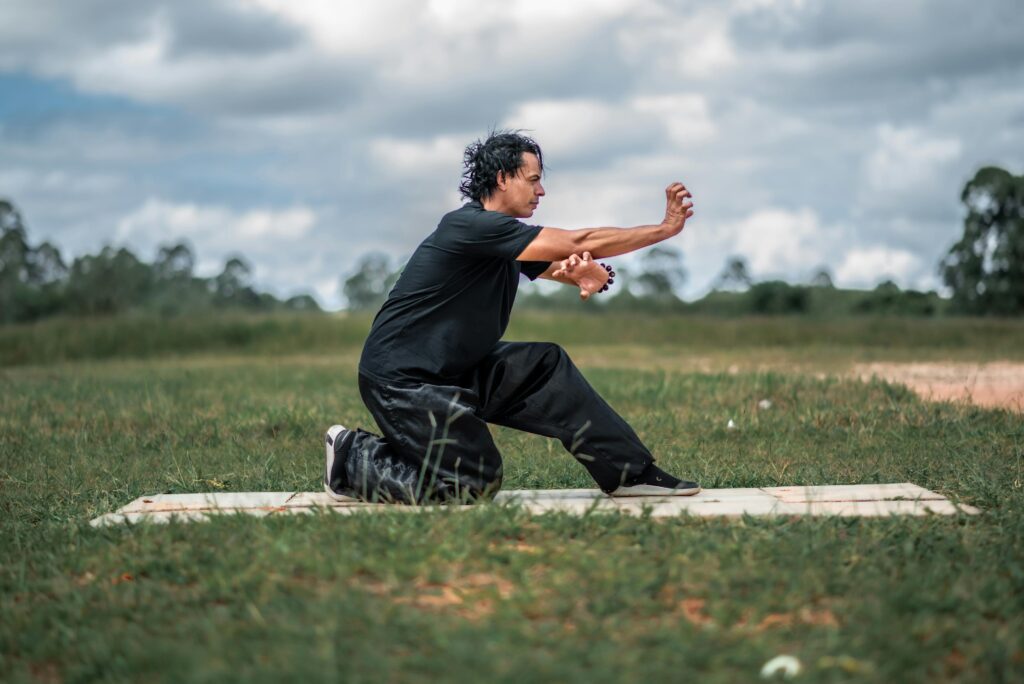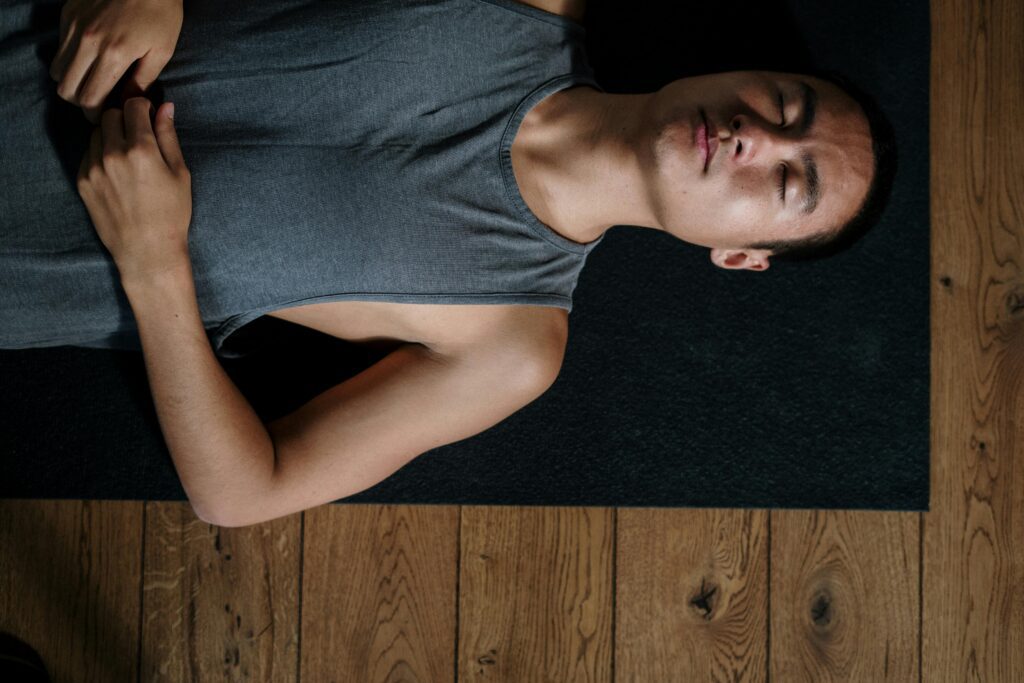Meditation has been a cornerstone of human wellness for millennia, originating from ancient spiritual and philosophical traditions across cultures. Today, it serves as a powerful tool for enhancing mental clarity, emotional balance, and physical health. Among the many kinds of meditation, each offers unique approaches to achieving inner peace, focus, and self-awareness. Scientific studies have validated its benefits, including stress reduction, improved concentration, and support for conditions like anxiety, depression, and chronic pain. This article explores seven prominent kinds of meditation: Mindfulness meditation, Spiritual meditation, Focused meditation, Movement meditation, Transcendental meditation, Loving-kindness meditation, and Body scan meditation. For each kind of meditation, we’ll detail its description, postures and practice methods, advantages, what it addresses or helps cure, recommended times to practice, and additional insights. Whether you’re new to meditation or looking to expand your practice, understanding these kinds of meditation practices can help tailor a routine that fits your lifestyle and goals.
Mindfulness Meditation
Mindfulness meditation is one of the most accessible and widely studied kinds of meditation, drawing from Buddhist principles but adapted for secular use. It involves cultivating present-moment awareness by observing thoughts, emotions, and sensations without judgment, helping to break cycles of rumination and reactivity.
To practice this kind of meditation, choose a quiet environment and adopt a comfortable posture—such as sitting cross-legged on a floor cushion (known as the lotus or half-lotus position) or upright in a chair with feet flat on the ground. Keep your spine straight to maintain alertness, hands resting on your knees or lap. Close your eyes or gaze softly downward, and anchor your attention on the breath: feel the rise and fall of your abdomen or the air passing through your nostrils. When distractions arise, note them gently and redirect focus. Sessions typically range from 5 to 30 minutes, and it can be integrated into daily activities like walking or eating for informal practice. Guided audio tracks are helpful for beginners.

The advantages of mindfulness meditation include heightened self-awareness, better emotional regulation, and increased resilience to stress. Research indicates it can thicken the prefrontal cortex, improving decision-making and focus, while also promoting better sleep and immune function.
This kind of meditation addresses issues like chronic anxiety, depression, and stress-related disorders. It doesn’t cure these conditions outright but acts as an effective complementary therapy, with studies showing reductions in anxiety symptoms by up to 40% and long-term relief from depressive episodes. It’s particularly beneficial for managing pain perception and enhancing overall mental health in high-pressure environments.
Ideal times for mindfulness meditation are in the morning to start the day with clarity, during midday breaks to recharge, or in the evening to process the day’s events. Aim for daily sessions of at least 10-20 minutes for noticeable benefits, though even brief 2-minute practices can accumulate positive effects.
Additional insights: As one of the foundational kinds of meditation, mindfulness is versatile and evidence-based, often taught in programs like Mindfulness-Based Stress Reduction (MBSR). It’s suitable for all ages and can be combined with other kinds of meditation for a hybrid approach.
Spiritual Meditation
Spiritual meditation stands out among kinds of meditation for its emphasis on connecting with a higher power, inner divinity, or universal consciousness. Rooted in religious traditions like Hinduism, Christianity, and Sufism, it fosters a sense of purpose and transcendence beyond the material world.
Practice this kind of meditation in a serene setting, such as a dedicated altar space or nature. Common postures include sitting in a full or half-lotus position on the floor, kneeling, or seated in a chair with palms upturned in a receptive gesture. Close your eyes, breathe deeply, and engage in silent prayer, mantra repetition (e.g., “Om” or a personal affirmation), or reflection on spiritual texts. Allow feelings of gratitude and unity to emerge. Sessions often last 15-45 minutes, sometimes incorporating elements like incense or soft music.

Advantages encompass profound inner peace, enhanced empathy, and a deeper life perspective. It can reduce feelings of isolation, boost emotional well-being, and even support physical health through stress alleviation.
This kind of meditation addresses spiritual disconnection, grief, and existential anxiety. It helps alleviate symptoms of depression linked to a lack of meaning and provides comfort during life transitions, though it’s not a medical cure but a supportive practice for holistic healing.
Recommended times include dawn for spiritual awakening, sunset for reflection, or during religious observances. Flexibility is key—integrate it whenever seeking deeper connection, with consistency yielding greater spiritual growth.
Other details: Unlike purely secular kinds of meditation, spiritual meditation can be personalized to any belief system, making it inclusive. It overlaps with prayer practices and is ideal for those exploring faith or personal growth.
Focused Meditation
Focused meditation, also called concentration meditation, is a disciplined kind of meditation that hones the mind on a single object to build mental stamina and reduce wandering thoughts. It’s a building block for more advanced kinds of meditation and is prevalent in yogic and Zen traditions.
For practice, sit in a stable posture like the Burmese position (legs folded comfortably) or on a chair with an erect spine to prevent drowsiness. Select a focus point—such as breath counting, a visual object like a flower, or a sound (e.g., a bell). Maintain attention there; if the mind drifts, return without frustration. Begin with 5-10 minutes and extend to 30 as proficiency grows.

Benefits include sharpened attention, decreased mental fog, and improved productivity. It strengthens neural pathways for focus, potentially increasing cognitive efficiency and emotional stability.
This kind of meditation targets attention deficits, overwhelm from distractions, and stress-induced scatterbrain. It’s supportive for conditions like ADHD or burnout, helping to manage symptoms through better concentration, though it complements rather than cures clinical issues.
Best times are mornings to prime the mind for the day or before tasks requiring deep focus. Short sessions during work can reset attention, with daily practice recommended for lasting improvements.
Insights: As a core among kinds of meditation, it’s challenging initially but rewarding. Variations include gazing meditation (trataka) and can use aids like mala beads for counting.
Movement Meditation
Movement meditation differentiates itself from seated kinds of meditation by incorporating physical activity to achieve mindfulness, making it perfect for restless individuals. It includes practices like walking meditation, yoga, or tai chi, where motion becomes the anchor for awareness.
No rigid posture is required; instead, engage in slow, deliberate movements. For walking meditation, stand tall with relaxed shoulders, take mindful steps focusing on foot-ground contact and breath synchronization. In yoga, flow through asanas with attentive breathing. Sessions vary from 10-60 minutes, often outdoors for added grounding.

Advantages blend mental calm with physical vitality, improving flexibility, reducing tension, and enhancing mood through endorphin release.
It addresses physical restlessness, sedentary lifestyle stress, and mild anxiety. This kind of meditation helps manage chronic pain by increasing body awareness and can support recovery from injuries as a gentle exercise form.
Practice during active times like morning walks or evening yoga, or when feeling antsy during traditional meditation. It’s adaptable to daily routines for ongoing benefits.
Notes: Among dynamic kinds of meditation, it’s highly accessible and therapeutic, promoting mind-body integration without stillness.
Transcendental Meditation
Transcendental Meditation (TM) is a mantra-based kind of meditation popularized in the 20th century, designed for effortless transcendence to quieter mind levels, distinct from concentration-heavy practices.
Sit comfortably in a chair or on the floor with closed eyes and a straight but relaxed spine. Silently repeat a personalized mantra (learned from a certified teacher) for 20 minutes, twice daily, allowing thoughts to pass naturally.

Benefits feature deep rest, creativity boost, and stress reduction, with evidence of lowered blood pressure and anxiety.
This kind of meditation tackles chronic stress, hypertension, and insomnia, serving as a complementary aid for heart health and PTSD.
Times: Morning upon waking and late afternoon or evening.
Details: Requires instruction; it’s non-religious and research-backed among kinds of meditation.
Loving-Kindness Meditation
Loving-kindness meditation, or Metta, is a compassionate kind of meditation from Buddhist origins, aimed at generating goodwill toward oneself and others to dissolve barriers of resentment.
Adopt a comfortable seated posture—lotus, chair, or lying down. Breathe steadily, then mentally recite phrases like “May you be safe” starting with yourself, then expanding outward. Visualize warmth. Sessions: 10-40 minutes.

Advantages: Fosters empathy, reduces negativity, and strengthens relationships.
It addresses self-criticism, anger, and social isolation, helping with depression and interpersonal conflicts.
Best times: Mornings for positivity or evenings to forgive daily grievances.
Insights: Heart-centered among kinds of meditation, it’s transformative for emotional health.
Body Scan Meditation
Body scan meditation is a relaxation-oriented kind of meditation that systematically surveys the body to release held tension, often used in mindfulness programs.
Lie flat on your back (corpse pose) or sit upright. Starting from toes or head, mentally scan each area, noting sensations and breathing into tightness. Duration: 15-45 minutes.

Benefits: Promotes relaxation, better sleep, and pain awareness.
This kind of meditation handles stress, insomnia, and physical discomfort, aiding chronic pain management.
Times: Bedtime for winding down or post-exercise.
Details: Sensory-focused, it’s beginner-friendly and complements other kinds of meditation.
Conclusion
In conclusion, exploring the diverse kinds of meditation—from the present-moment focus of mindfulness to the compassionate outreach of loving-kindness—reveals a rich tapestry of practices tailored to individual needs, whether for stress relief, spiritual growth, or physical well-being. Each kind of meditation offers unique postures, techniques, and benefits, addressing everything from anxiety and chronic pain to emotional disconnection and mental clutter, with flexible timing to fit any lifestyle. By incorporating one or more of these meditative practices into your routine, you can unlock profound improvements in clarity, resilience, and overall harmony, empowering a journey toward a more balanced and fulfilling life. Remember, the key lies in consistent practice and an open mind, allowing these ancient yet timeless tools to transform your daily experience.
Sources
The information in the article draws from a variety of scientific studies, reviews, and expert resources on meditation practices. Below is a comprehensive list of key sources, grouped by meditation type for clarity. These include peer-reviewed articles, health organization reports, and research summaries that substantiate the descriptions, benefits, addressed conditions, and other details discussed. I’ve selected the most relevant and credible ones from recent searches, focusing on evidence-based content.
Mindfulness Meditation
1. “Meditation and Mindfulness: Effectiveness and Safety” – National Center for Complementary and Integrative Health (NCCIH), 2022. Discusses effectiveness in reducing chronic pain and stress. https://www.nccih.nih.gov/health/meditation-and-mindfulness-effectiveness-and-safety
2. “What are the benefits of mindfulness?” – American Psychological Association (APA), 2012. Covers improvements in self-control, concentration, and mental clarity. https://www.apa.org/monitor/2012/07-08/ce-corner
3. “When science meets mindfulness” – Harvard Gazette, 2018. Explores brain changes and benefits for conditions like anxiety and depression. https://news.harvard.edu/gazette/story/2018/04/harvard-researchers-study-how-mindfulness-may-change-the-brain-in-depressed-patients/
4. “Meditation and Its Mental and Physical Health Benefits in 2023” – PMC (PubMed Central), 2023. Highlights anti-inflammatory responses and healthy aging. https://pmc.ncbi.nlm.nih.gov/articles/PMC10355843/
5. “Mindfulness meditation: A research-proven way to reduce stress” – APA, 2019. Details brain and biology changes improving mental and physical health. https://www.apa.org/topics/mindfulness/meditation
Spiritual Meditation
6. “Meditation and Mindfulness: Effectiveness and Safety” – NCCIH, 2022. General health benefits and improved quality of life. https://www.nccih.nih.gov/health/meditation-and-mindfulness-effectiveness-and-safety
7. “What is Spiritual Meditation?” – Healthline, 2021. Spiritual benefits like inner peace and balanced sense of being. https://www.healthline.com/health/mind-body/spiritual-meditation
8. “Spirituality Within Reach: A Pathway through Meditation” – Antioch University, PDF. Benefits including stress reduction from spiritual practices. https://aura.antioch.edu/cgi/viewcontent.cgi?article=1507&context=etds
9. “Psychobiological mechanisms underlying the mood benefits of meditation” – ScienceDirect, 2021. Decreases stress reactivity on multiple levels. https://www.sciencedirect.com/science/article/pii/S2666497621000114
10. “Meditation: A simple, fast way to reduce stress” – Mayo Clinic, 2023. Sense of calm and emotional well-being. https://www.mayoclinic.org/tests-procedures/meditation/in-depth/meditation/art-20045858
Focused Meditation
11. “Brief Mindfulness Meditation Improves Attention in Novices” – PMC, 2018. Enhances executive attention and ERPs. https://pmc.ncbi.nlm.nih.gov/articles/PMC6088366/
12. “Brief, daily meditation enhances attention, memory, mood, and emotional regulation” – ScienceDirect, 2019. Improvements in attention and working memory after 8 weeks. https://www.sciencedirect.com/science/article/abs/pii/S016643281830322X
13. “The Effect of Meditation on Concentration Level and Cognitive Performance” – ResearchGate, 2025. Tests meditation’s impact on cognitive performance. https://www.researchgate.net/publication/329909772_The_Effect_of_Meditation_on_Concentration_Level_and_Cognitive_Performance
14. “How Meditation Can Help You Focus” – Columbia SPS, 2021. Benefits for focus, memory, and attention span. https://sps.columbia.edu/news/how-meditation-can-help-you-focus
15. “12 science-based benefits of meditation” – Humanitas University, 2022. Focused-attention meditation increases attention endurance. https://www.hunimed.eu/news/12-science-based-benefits-of-meditation/
Movement Meditation
16. “The Health Benefits of Tai Chi” – Harvard Health, 2022. Improves muscle strength, flexibility, and balance. https://www.health.harvard.edu/staying-healthy/the-health-benefits-of-tai-chi
17. “Tai Chi vs. Yoga: What’s the Difference?” – GoodRx, 2024. Promotes strength, flexibility, and calm. https://www.goodrx.com/well-being/movement-exercise/tai-chi-vs-yoga
18. “The Benefits of Yoga, Tai Chi, Qigong, and Expressive Arts” – Meadows Behavioral Healthcare, 2019. Reduces anxiety, depression, and stress. https://meadowsoutpatient.com/holistic-healing-the-benefits-of-yoga-tai-chi-qigong-expressive-arts/
19. “Tai Chi, Yoga, and Qigong as Mind-Body Exercises” – PMC, 2017. Physical and psychosocial benefits. https://pmc.ncbi.nlm.nih.gov/articles/PMC5244011/
20. “The benefits of moving meditation and how to start practicing” – Calm, 2023. Strengthens body and calms mind via yoga and tai chi. https://www.calm.com/blog/moving-meditation
Transcendental Meditation
21. “Review of Controlled Research on the Transcendental Meditation Program” – PMC, 2008. Reduces risk of heart attack and stroke. https://pmc.ncbi.nlm.nih.gov/articles/PMC2211376/
22. “What Is Transcendental Meditation (TM)?” – Cleveland Clinic, 2024. Physical, mental, and cognitive benefits. https://my.clevelandclinic.org/health/treatments/22292-transcendental-meditation
23. “Transcendental Meditation and Its Many Benefits” – Verywell Mind, 2022. Decreases stress and anxiety quickly. https://www.verywellmind.com/transcendental-meditation-and-its-many-benefits-4159899
24. “TM Research Overview” – Maharishi International University, 2024. Decreased anxiety and effectiveness meta-analysis. https://research.miu.edu/tm-technique/
25. “Transcendental Meditation: Benefits, Technique, and More” – WebMD, 2023. Reduces chronic pain, anxiety, and blood pressure. https://www.webmd.com/balance/transcendental-meditation-benefits-technique
Loving-Kindness Meditation
26. “Loving-Kindness and Compassion Meditation” – PMC, 2011. Enhances brain areas for emotional processing and empathy. https://pmc.ncbi.nlm.nih.gov/articles/PMC3176989/
27. “18 Science-Backed Reasons to Try Loving-Kindness Meditation” – Psychology Today, 2014. Benefits for well-being and illness relief. https://www.psychologytoday.com/us/blog/feeling-it/201409/18-science-backed-reasons-try-loving-kindness-meditation
28. “The Evidence-Based Benefits of Loving-Kindness Meditation” – Kripalu, 2024. Reduces stress response over short courses. https://kripalu.org/resources/evidence-based-benefits-loving-kindness-meditation
29. “The effect of loving-kindness meditation on positive emotions” – PMC, 2015. Enhances positive emotions effectively. https://pmc.ncbi.nlm.nih.gov/articles/PMC4630307/
30. “Metta Meditation: Benefits, Science, and How to Practice” – Holistic Wellness Practice, 2022. Promotes self-compassion and empathy. https://www.holisticwellnesspractice.com/2022/06/16/metta-meditation-the-benefits-the-science-behind-it-how-to-do-it
Body Scan Meditation
31. “The effects of body scan meditation: A systematic review and meta-analysis” – PubMed, 2022. Impacts on health-related outcomes. https://pubmed.ncbi.nlm.nih.gov/35538557/
32. “Mindfulness, Interoception, and the Body: A Contemporary Perspective” – PMC, 2019. Increases bodily awareness and relaxation. https://pmc.ncbi.nlm.nih.gov/articles/PMC6753170/
33. “Beyond relaxation: The art and science of body scan meditation” – VA News, 2024. Benefits for stress reduction and sleep quality. https://news.va.gov/128437/relaxation-art-science-body-scan-meditation/
34. “Body Scan Meditation” – Greater Good in Action, 2024. Improvements in mental health for terminal patients. https://ggia.berkeley.edu/practice/body_scan_meditation
35. “Effectiveness of Deep Breathing and Body Scan Meditation Combined with Music Relaxation” – ScienceDirect, 2020. Improves sleep quality and quality of life. https://www.sciencedirect.com/org/science/article/pii/S1874944520000295





0 Comments